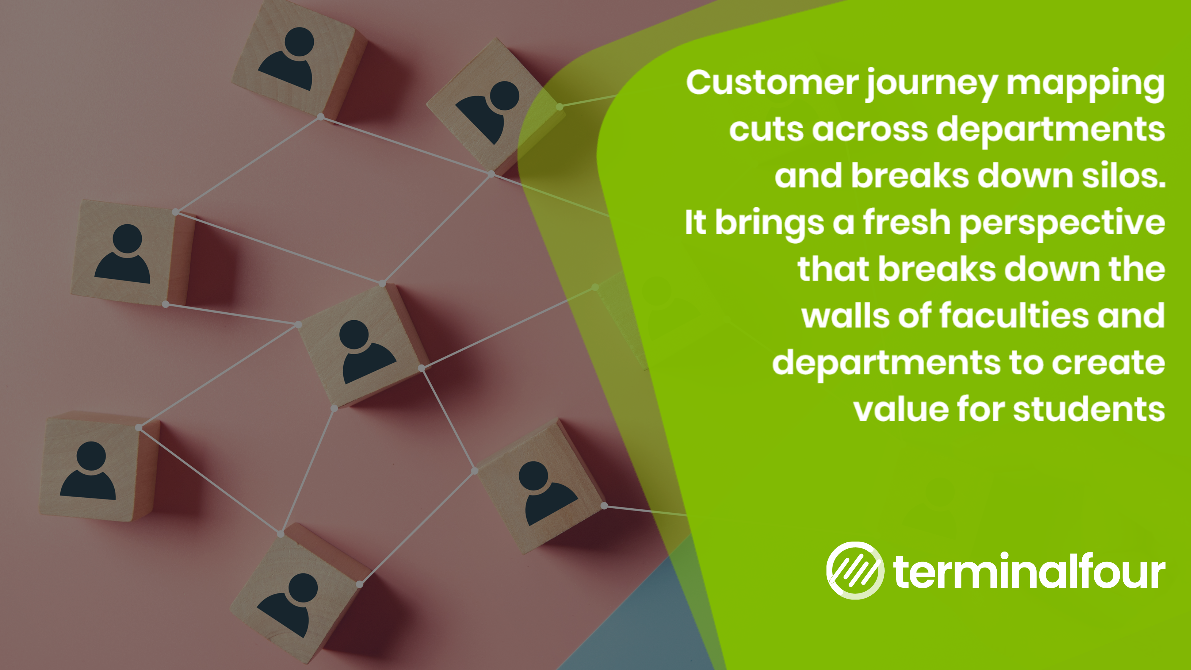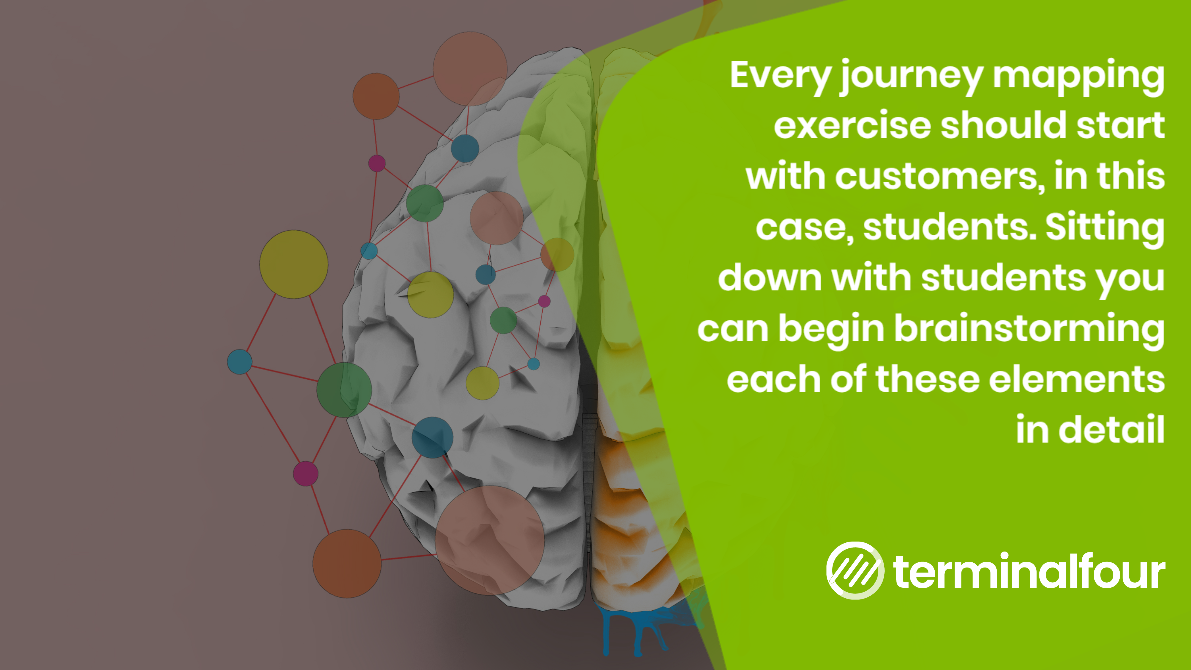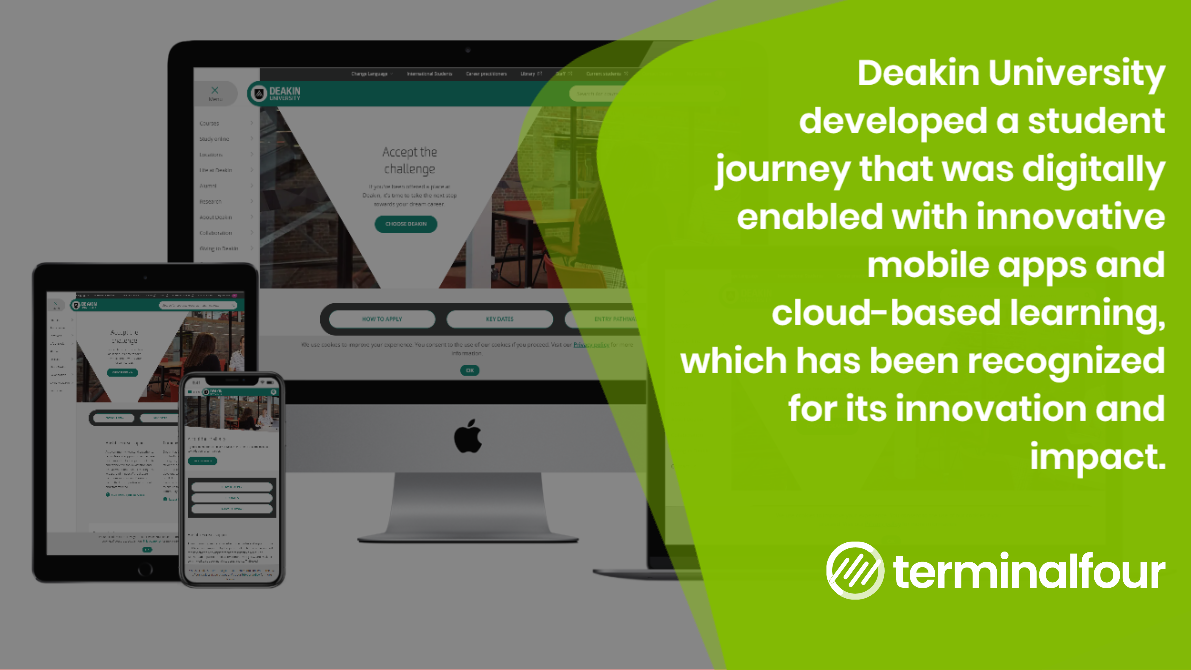Using journey mapping to optimize the student experience
The path to a degree application is fluid, nuanced and increasingly complex. Competition is fierce, tactics are becoming more sophisticated and students are arguably harder to engage with traditional marketing activity.
Some universities are responding by mapping out the student journey in order to better optimize the application process and student experience. Read on to find out what it is, how you can use it to identify valuable strategic opportunities and the process to get there.
What is student journey mapping and why is it important
The student journey is the end-to-end sequence of all the interactions that student experiences throughout their connection with a university, from the first time they become aware of the institution, to undertaking their studies, graduating and continuing their learning and keeping in touch as an alumnus.
Inevitably, the focus along this journey is often the prospective student journey through to conversion. With 49 touchpoints in a typical education purchase journey, and the average time from initial awareness through to an inquiry being 36 days, it's no wonder institutions are reviewing the student enrolment process at a granular level.
Understanding prospective students' mentality is a good starting point of course, but marketing and recruitment teams are now often diving deeper into students' considerations, beliefs, obstacles and the options available to them to gain greater insights.

The more you can understand your prospective student's goals, the better. Are they excited, worried, frustrated, relaxed, stressed, trusting or skeptical? And how does this change through the application cycle?
This will also help you to clarify:
- How you can understand their mindset and help them to achieve their goals?
- What's unique about your institution and the way you offer your education services?
- How can you best serve students, and do so differently to competitors?
Further benefits of student journey mapping
Mapping out the student journeys provides an excellent framework to enable the marketing practices within university organizations to reach a higher level. When properly executed there are some major benefits.
- Breaking down silos: Customer journey mapping cuts across departments and breaks down silos. It brings a fresh perspective that breaks down the walls of faculties and departments to create value for students
- Institutions rightly pay attention to their internal product and the quality of content. Student journey mapping brings a focus to the external customer - students.
- A student-focused approach can enhance marketing and build a competitive advantage by driving new ways to convey the specific USPs of institutions in ways that resonate with students.

The key elements of a student journey mapping exercise
A detailed student journey exercise typically includes these elements. You can use these steps to understand and transform your institution's student experience.
- Personas: these are fictional characters used to describe different groups of prospective students in detail. We've all witnessed poorly researched and articulated personas. But when they're specific, well researched and crafted with specific detail such as demographic and psychographic information, they can provide a truly great foundation for student journey mapping. Audience groupings can also be useful here, for example, how the international student conversion journey plays out compared to domestic students or commuter students versus students using university accommodation, and mature students versus school leavers.
- Phases: these are the typical steps a student goes through in the process through to enrolment at your institution. We often see these cited as discovery, evaluation, application, enrolment, retention, and loyalty, but you can define your own specific stages relating to the conversion journey.
- Touchpoints: by this, we mean any point of contact that can be made between prospective students and the university, whether that be booking forms on the website, social media channels, a downloadable prospectus, a click to call moment, a campus visit, a live chat or a student ambassador interaction. A useful exercise here is mapping out the current student journey and documenting any 'pain' and 'love' points.
- Psychographic: It's important to explore the mindsets of prospective students through their enrolment journey. Research can play a part here in terms of uncovering what they're thinking and feeling as they move through the process.
- Improvement opportunities: Once you've completed the steps above, you can map the phases to processes and systems to build up a full picture. This enables you to identify gaps and areas for improvement as well as ways to improve conversion.
The student perspective on the journey to enrolment
Every journey mapping exercise should start with customers, in this case, students. Sitting down with students you can begin brainstorming each of these elements in detail. This can work well in a semi-structured way, working with the topic areas but allowing the conversations and ideas to flow naturally. As you step through this activity you can pin down important insights directly against specific touchpoints
Whatever you do you mustn't explain away problems or avoid writing them on the map. You should capture everything, warts and all, because an issue that you avoid now may be the root cause of further problems later in the journey.
Also remember that even if you know the cause of a problem, your students may not. They don't see all the complexities of enrolment or registration and their experience may be explained in a raw and personal format that needs translating to the process you're mapping.

The university perspective on the journey to enrolment
Once you have documented the insights from students you can now think about the journey from the point of view of your institution. At this stage, you should consult admissions, marketing and digital teams, people involved in open days, academics and your leadership team. You should carry out workshops with staff, faculty and existing students including student ambassadors to further understand the student journey.
Through this dialogue, you can also build up a picture to understand which systems and which processes influence and define the various touchpoints.
This can be a daunting task but breaking down the journey into each phase and following the data paths and systems involved will make the activity much more manageable.
Putting the student at the center
A definitive process for reshaping the student experience, student journey mapping enables university teams to draw unique insights from the perspective of their key audience.
Rooted in created a user-centric experience, the concept can be an excellent foundation for projects. From changing the way that students are recruited to the ways dons are engaged, the mapping process can help to nurture good business practices and bring about real change.
Leading universities worldwide already have student journey mapping initiatives up and running. Deakin University in Australia, for example, underwent a digital transformation to enhance the student experience. They developed a student journey that was digitally enabled with innovative mobile apps and cloud-based learning, which has been recognized for its innovation and impact.

In recent times, we have heard a lot of universities say that they are putting the 'student at the heart of what we do' and the 'student experience' has become a Key Performance Indicator for some.
By focusing on the student and their needs you can very quickly qualify ideas and potential projects based on whether or not they improve or degrade the student experience.
The student experience is paramount and now crucial to raise enrolment numbers. Implemented effectively, it can attract students, improve onboarding, enrich student life, provide a 360-degree view of the student and deliver effective alumni engagement.
Student journey mapping can't offer a solution to all the challenges facing universities, but it can be an important foundation behind the marketing that will help move innovative institutions forward.

:format()//media/Journey-Mapping.png)